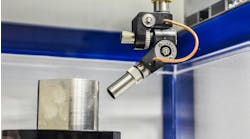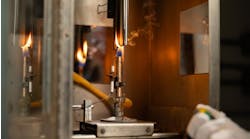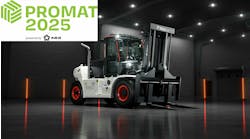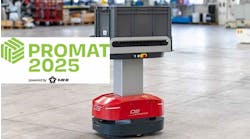Railroad expansions in emerging economies world, and rail system updates in the developed world, have sustained demand for wheel-forming machines and lines over the past five years. Now, a heat-treating specialist has developed a system for hardening the rims or railway wheels of different shapes and sizes so that the operation can operate continuously without interruptions for altering treatment formulae or sequences to account for different wheel sizes.
LOI Thermprocess is a Tenova Group company that focuses on steel and aluminum heat treatment.
In addition to flexible operation, the new wheel rim hardening machines significantly reduce the time required for tests and ensure higher process security.
With the individually controlled nozzles, which can be changed from one batch to the next, the wheel rim hardening machines can be used for treating wheels of almost any dimension. The control system allows the cooling table program to be similarly adjusted. This means that batch changes can be completed automatically without interrupting production. Even so, precise repeatability of the quenching and tempering processes is ensured for each specific batch.
The designers developed an extremely robust system, without any sensitive mechanisms. As a result, the new tables have significantly fewer parts than previous designs. The tables consist mainly of standard components available from stock, meaning that spare parts can be delivered quickly.
For quenching, the tables use water temperatures ranging from 30 to 35°C. This is especially for plants in countries with high ambient temperatures, meaning it is not necessary to chill the cooling water to 20°C.
The new hardening tables immediately proved themselves in practice on a recently installed fully-automated quenching and tempering line for railway rolling stock wheel rims. LOI used a mathematical model developed especially for hardening as well as a quenching program computer. Using this computer, quenching parameters are calculated to ensure that the wheels reach the specified values, even after product changes.
Using this model, LOI has reduced commissioning times from up to one year to a few weeks. The customer saves material and laboratory time and can also start production earlier.
The furnace technology used in heat treatment plants has already reached a very high standard. In many manual or semi-automatic treatment lines, the quality of quenching depends on the qualification and experience of a few employees. The hardness required is normally reached but the microstructure does not always meet the requirements set out in standards. Especially for high-speed train wheels, it is crucially important for process parameters to be reproducible within very tight limits.
To date, the development of programs for new products and the running-in phase following product changes have been extremely time-consuming and have resulted in considerable material losses. Until wheels meet the required specifications, they must be destructively tested so that metallurgical parameters can be inspected over the cross-section of the wheel.
The model developed by LOI receives the specified properties of the finished wheel as inputs and calculates quenching parameters from the geometry of the wheel and the material composition. This procedure is independent of the various national standards which need to be applied.









